
French Basque Country:
THE MOST BEAUTIFUL TOWNS & VILLAGES
From the most charming towns of Ainhoa, Sare, Espelette and La Bastide Clairence to the inevitable pilgrim stop Saint-Jean-Pied-de-Port and the luxurious beach resorts of Biarritz and Saint-Jean-de-Luz, let’s explore the most iconic and beautiful towns of the French Basque Country.
Let’s face it, the French Basque country is not as famous as its Spanish sister region on the other side of the Pyrenees. Yet, Biarritz and its thriving province are nonetheless equally as beautiful and rich in History. From corsairs and whaling harbors to royalty resorts and surfing hot spots, the French “Pays Basque” has seen wars and destructions over the centuries, as well as growth and changes, while always conveying the pride of its Basque origins.
However, despite the widespread Basque culture found in its cuisine, architecture, arts and craftwork, the French side isn’t as recognised on the international scene. Maybe Spain does a better job at promoting the Basque region than France? One thing is sure, most tourists head towards San Sebastian or Bilbao, skipping the French Basque Country or saving it as a quick day-trip to Biarritz.
Still, the 3 basque sections in the French territory – called Labourd, Basse Navarre and La Soule – offer incredible landscapes from the Atlantic Ocean to the high peaks of the Pyrenees. Tucked in between, the countryside subsists as off-the-beaten-path heaven with misty hills and picturesque towns. Only here will you find Basque Pelota “frontons” and the red or green half-timbered houses, typical of the region.
The most beautiful towns and villages in the French Basque country.

AINHOA
Ainnoa has been for a very long time a place where pilgrims that walk the St-James’ way would stop to rest, eat and refresh. Nowadays, the town is less popular as the “French Way” to Santiago de Compostella mainly attracts pilgrims to Saint-Jean-Pied-de-Port, leaving Ainhoa to its quiet existence rhythmed by occasional visits from tourists and locals.
Just as “La Bastide-Clairence” (see below), the main street of Ainhoa hosts art galleries and craft artists within the old and charming houses whose woodworks are painted in red like most of the traditional Basque buildings. As you stroll down the main road, you’ll arrive at the village’s fronton where local kids like to play Pelota, next to the beautiful “Notre-Dame” church. In the cemetery, you’ll find ancient headstones showcasing 16th-century funeral art.
Make sure to enter the church to see the wooden balconies, typical of the region. If you find the church too dark, you can donate €1 to switch on the lights and music – it will transform the visit into a pleasant experience. Ainhoa is a gorgeous little village to add to your list if you are looking for a typical Basque village to relax and shop for local craftwork.
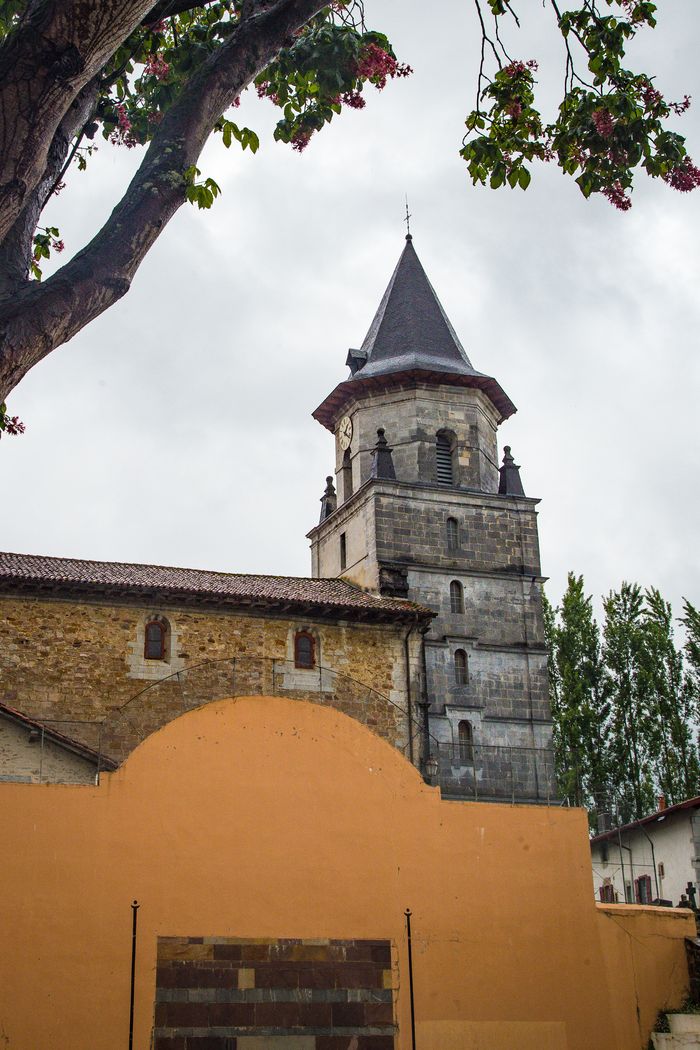
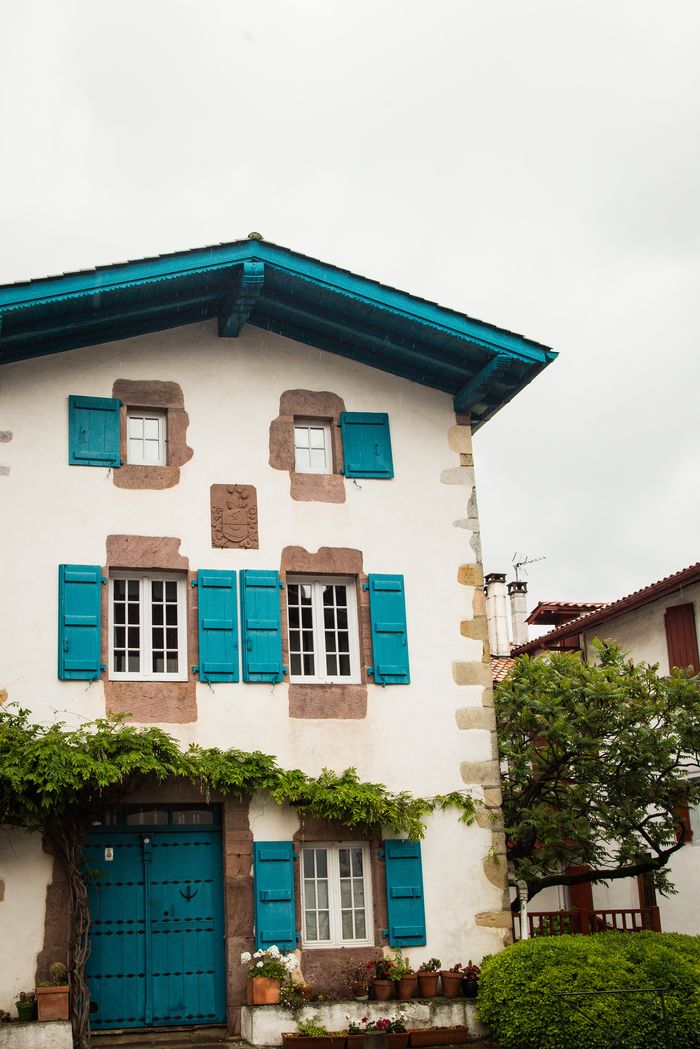
Useful information about Ainhoa
Don’t miss: the 16th-century houses with banana trees in the gardens.
Visit: “La Maison du Patrimoine” to learn about local history.
Eat: “Le pain d’épice d’Ainhoa” a French spiced bread that tastes just like Christmas!
Sleep: Hôtel Ithurria – Maison Goxoki – Gite La Rhune
| How to get to Ainhoa: Car via road D20 – Bus 22 from Saint-Jean-de-Luz – Plane via Biarritz (30km) or San Sebastian (40km) airports.

BAYONNE
Bayonne has developed itself for centuries from its Roman origins throughout hostile corsairs and even English rule, to finally become one of the most lively and beautiful cities in France. Yet, Bayonne remains an underrated destination, living in the shadow of its sophisticated and prestigious neighbouring city Biarritz, with whose it maintains a strong love-hate relationship. Just a couple of hours at the stadium for a”derby” rugby match may be enough to truly experience this!
Bayonne is captivating and worth a visit for its typical “Art de Vivre” Basque, charming architecture along the banks of the rivers Adour and Nive, shady cobblestone streets and week-long street parties (“fêtes de Bayonne”). You can easily join a walking tour through the medieval streets and learn about the local history.
We love its riverbank lined with renovated half-timbered buildings and the reflection of the red, blue or green painted shutters into the water. Likewise, we can only recommend strolling around Bayonne’s lively historical centre, a testimony of rich patrimony and home to many artisanal shops offering “Bayonnaise” speciality foods such as ham and chocolate.
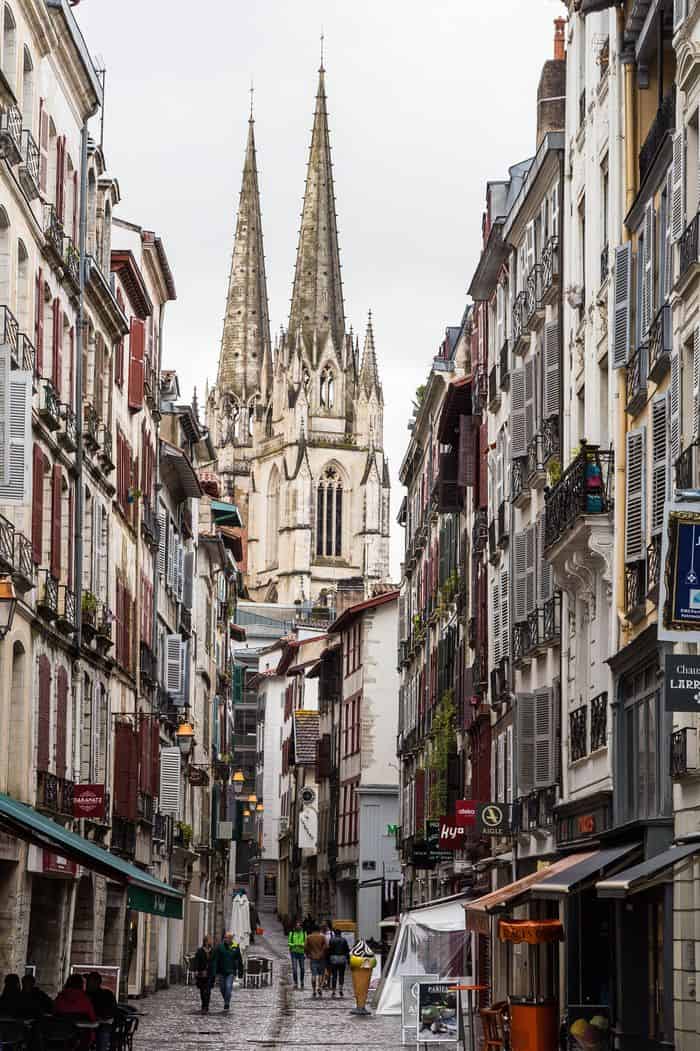
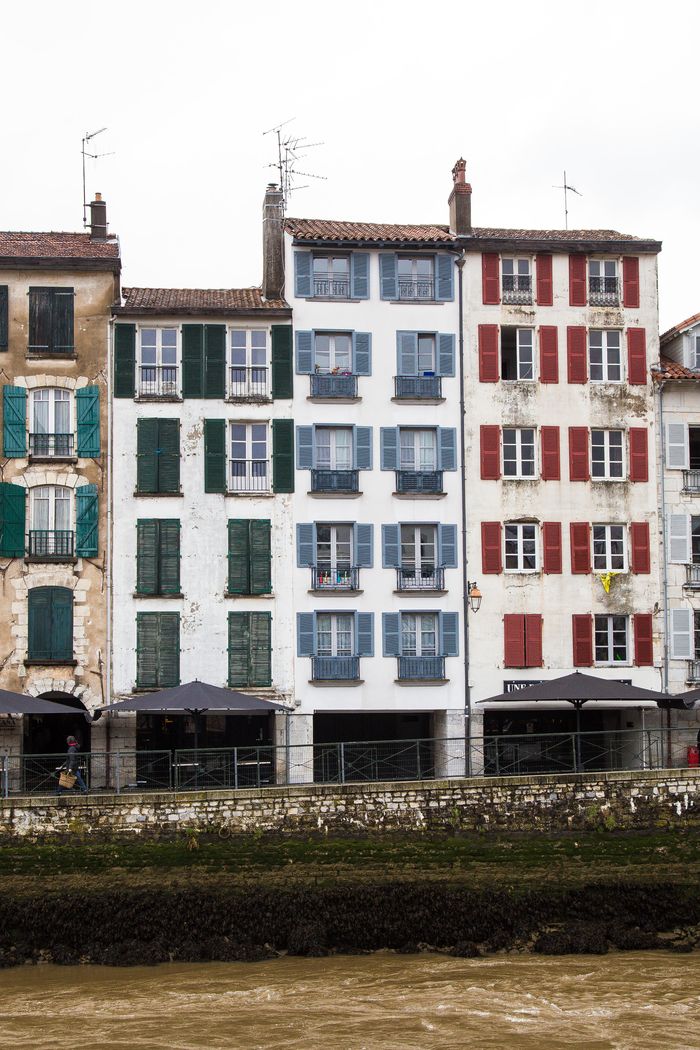
Useful information about Bayonne
Don’t miss: the three neighbourhoods: Grand Bayonne, Petit Bayonne and Saint-Esprit
Visit: 13th-century Cathedral of Saint Mary of Bayonne – river bankside – Beaux-arts museum Bonnat – Basque Museum.
Eat: chocolate at “Chocolats Daranatz” – “La Chistera” for lunch (go early or book ahead)
Drink: Hot chocolate at “Chocolat Cazenave”
Sleep: Hotel Cote Basque – Welcomehome64 – Ibis Bayonne Centre
| How to get to Bayonne: Car via Highway A63 or A64 – Direct train from Paris, Bordeaux. Bus from many European cities – Plane via Biarritz airport. Learn more in our dedicated article to Bayonne (coming soon).
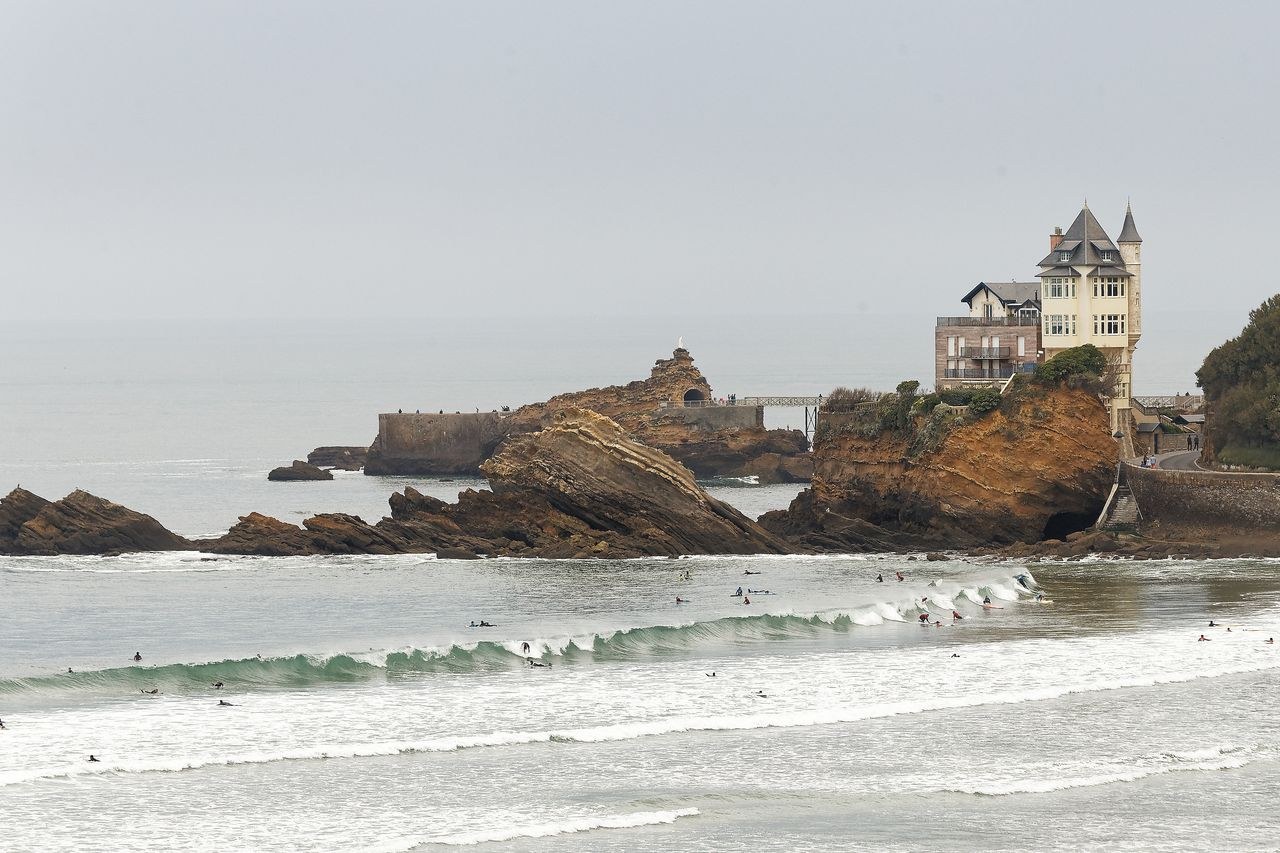
BIARRITZ
Long regarded as the “Queen of the resorts and the resort of the Kings” after Napoleon III’s wife – Eugénie de Montijo – decided to make it her summer pied-à-terre, Biarritz continues to attract celebrities with its beautiful mansions and luxurious hotels. Over the past few decades, Biarritz has also become a hot spot for international surfers, spa adepts and sophisticated shoppers.
With its incredible architecture, beautiful shredded coast and the right mixture of a ritzy and hippie atmosphere, Biarritz has a lot to offer even for a couple of days. You will enjoy strolling the 4km seaside saunters, watching the surfers at the Côte des Basques, picnicking at sunset from the Saint-Martin Lighthouse, or relaxing either at the beach or at one of the many spa resorts.
More: Complete guide – what to do in Biarritz
However, if you are visiting in the high season, make sure to start your explorations early in the morning. Free parking spots are rare and private ones fill up quickly. The beach tends to get crowded both on the sand and in the water and don’t be surprised to have to share it with the many surfers and bodyboarders.
If you are interested in learning about the town, join a nice walking tour with a guide who will tell you all about it!


Useful information about Biarritz
Don’t miss: Côte des Basques – Port des Pêcheurs – Grande Plage
Visit: Cité de l’océan – Muséum Asiatica
Eat: “Les Halles” (indoor market) – Bar Jean – Bali Bowl
Drink: Casa Juan Pedro – Etxola Bibi
Sleep: Surf hostel – Hôtel Alcyon – Windsor Grande Plage
| How to get to Biarritz: Car via Highway A63 or A64 – Train from Bayonne or Hendaye. Bus from many european cities – Plane via Biarritz airport. Learn more in our dedicated article to Biarritz.

ESPELETTE
Espelette is nationally known for its unique and subtle red peppers that hang on the village’s building facades to dry during the harvest season. The “piment d’Espelette” specifically selected for the town’s soil and humid weather was imported from the Americas during the 15th century and has since remained an important ingredient of Basque gastronomy.
In Espelette and around the region, you’ll find a lot of products made with this red pepper: from jelly to salt, salsa, jam, and even oil, honey and chocolate. We like it best as a powder to flavour meat, fish and salads.
The village is small but very popular with locals, nationals holidayers and international tourists looking for a countryside escape. In summer it can be hard to find a parking spot, but the streets are pedestrianised and enjoyable to stroll through while window shopping. The only downside, the buildings have fewer drying peppers on the facades outside of the high “piment” season which runs from September throughout October and November.
Make sure to also visit the extended village towards the Castle of the Barons of Espelette and the Saint-Etienne church which inside is typical of the Labourd region.
More: the best road-trip itinerary around the french basque country
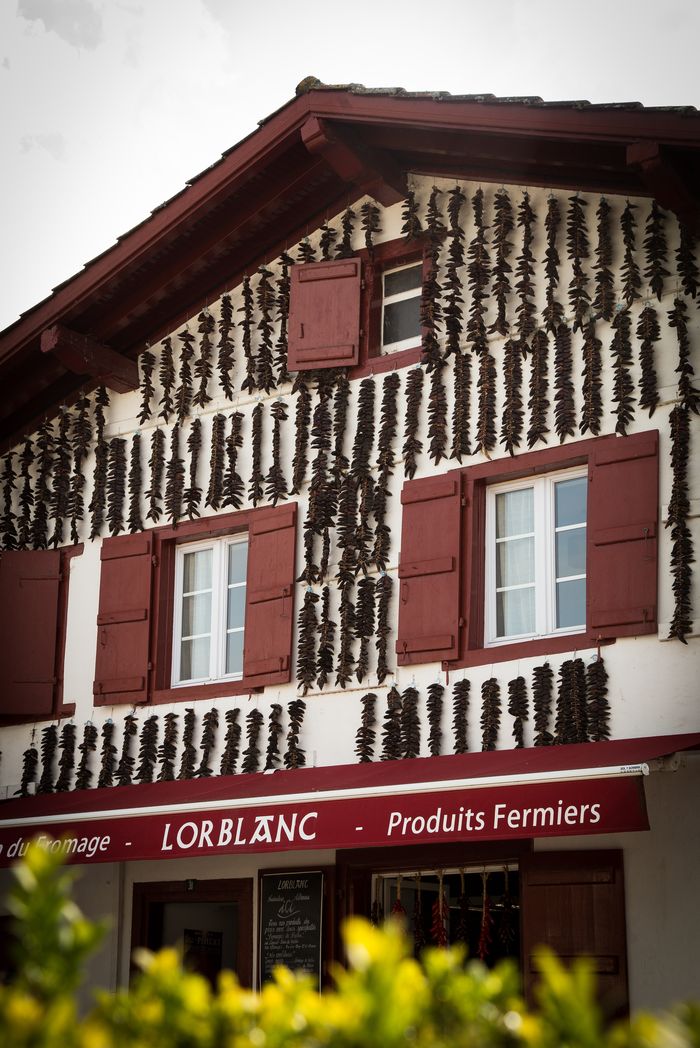

Useful information about Espelette
Don’t miss: “Lurretik” runs tours of the production from May to October on Tuesday and Friday at 11 am – Free
Visit: the interpretation centre to learn more about the “piment d’Espelette” culture, harvest and use.
Eat: Restaurant Euzkadi
Drink: Brasserie Labea – Chez Doxpi
Sleep: Hôtel Chilhar – Hôtel Euzkadi
| How to get to Espelette: Car via road D20 – Bus 22 from Saint-Jean-de-Luz or 814 from Bayonne – Plane via Biarritz (25km) or San Sebastian (45km) airports.

BIDART
Once upon a time, this seaside town focused on whaling fisheries, but now Bidart is an affordable tourist hub located along the southern coast of Biscay between Biarritz and Saint-Jean-de-Luz. Contrary to its neighbouring village Guétary – the smallest village in the French Basque country – which attracts rich families with its luxury hotels and casino, Bidart seems more laid back and oriented toward surfing.
In fact, with more than 5 km of sand separated within 6 beaches and as many surf schools, Bidart is on the rise of becoming the most popular surfing destination in the region thanks to a large distribution of campsites making the area a bit more budget-friendly.
We absolutely love the incredible panoramic views over the ocean from the church Sainte-Madeleine and the lovely seaside trail along the “route de la Corniche” that stretches from Erretegia beach to Saint-Jean-de-Luz (12km) or Hendaye (25km). This “Coastal path” is perfectly enjoyable for a morning or late afternoon stroll alone or with the family. Just note that in some parts, the trail can be close to the cliffs or the main road. Stay alert.
You may like: The best hiking spots in the French Basque Country
Useful information about Bidart
Don’t miss: the main square with the pelota fronton, city council, church, cemetery, post office, hotels, ect.
Visit: Basque pelota workshop at Ona Pilota
Eat: Basque cake at Moulin de Bassilour – Tantina de la Playa – La Voile rouge – Le Bleu Blanc Jaune
Drink: Kala Txiki –
Sleep: Camping Harrobia – Résidence Ilbarritz – Hah Lay surf House – Hotel Elissaldia
| How to get to Bidart: Car via road D810 or highway A63 – Bus 816 from Bayonne/Biarritz or 814 from BayonneHendaye/St-Jean-de-Luz – Direct train (TER) from Hendaye, Bayonne, Bordeaux… – Plane via Biarritz airports

LA BASTIDE CLAIRENCE
Voted as one of the “Most Beautiful Villages” in France, of which the Pyrénées Atlantique region counts 5 out of 158 in France. La Bastide Clairence was founded 7 centuries ago by Louis 1st – who became King of France Louis X afterwards. The original “mansion” built with Basque clay has been preserved, as well as the village square which is lined with typical white and red arcade houses.
La Bastide became a central hub for craft workers and artists. Strolling around is enough to understand how craft still plays an important role in the life of the town. Many artisans have settled down in La Bastide Clairence to open their workshops to visitors and expose their work. Among others, you’ll find glass sculptors, perfumers, jewellers and traditional waivers.
You can ask for a map at the tourism office in order to find all the workshops around town. We recommend popping by the “Trinquet” and asking at the bar (if the door on the side is closed) to visit the indoor pelota playground. The local teams often play on Saturday afternoon – a good opportunity to see some action and learn about these basque sports.
More: OUR 7 favourite places in the Spanish Basque country


Useful information about La Bastide-Clairence
Don’t miss: the main square and the “Trinquet”
Visit: the church to see the wooden balconies. Donate €2 for music and light.
Eat: La Table Gourmande de Ghislaine Potentier –
Drink: Les Arceaux – Trinquet Gartxot
Sleep: Les Collines Iduki – Les Chalets de Pierretoun – Le Clos Gaxen
| How to get to La Bastide-Clairence: Car via road D20 – Bus 22 from Saint-Jean-de-Luz or 814 from Bayonne – Plane via Biarritz (25km) or San Sebastian (45km) airports.
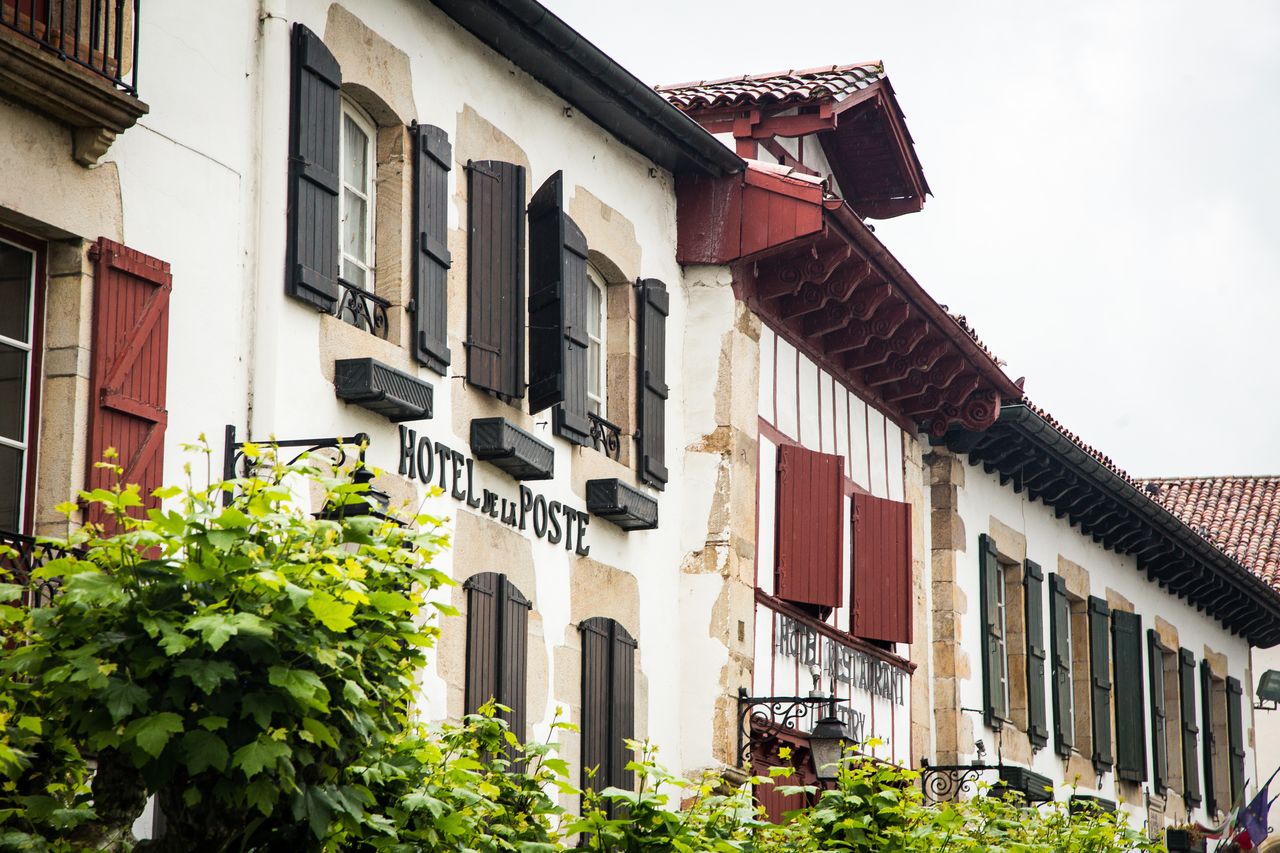
SARE
Sare is located nearby Ainhoa, right at the bottom of “La Rhune” (Larrun), an iconic hill in the Pays Basque for its Neolithic monuments (dolmens, stone circles). and mystical legends. It became popular in the 19th-century after Eugénie de Montijo (wife of Napoleon III) climbed the summit. Today, you can take a little train to the top or follow the Empress’s steps by hiking the mountain slopes.
Also recognised as one of the “Most Beautiful Villages of France”, Sare is what you would expect from a countryside town on the French Basque side. Pretty facades, a typical church and of course a large “fronton” to play the Basque Pelota! But if you give a closer look at the houses, you will see that cornerstones has replaced the usual deep-red half-timbering of the buildings.
Despite a dark history of extensive smuggling, the town is nowadays mostly known for its festivities and gastronomy and often used for inspiration in French literature such as in Pierre Loti’s novel “Ramuntcho”. It is a place of tradition, very lively during the summer and home to the delicious Gâteau Basque, the local cake filled with cream or cherry.


Useful information about Sare
Don’t miss: the view of the Pyrenees mountains in the background of the “fronton”.
Visit: La Rhune – Ortillopitz house – Prehistoric cave of Sare
Eat: Baketu – Restaurant Arraya – Akoka
Drink: Sare et Thé – Pleka Trinquet Bar
Sleep: Hotel Arraya – Hotel Pikassaria – Hôtel Baratxartea
| How to get to Sare: Car via road D20 – Bus 22 from Saint-Jean-de-Luz or 814 from Bayonne – Plane via Biarritz (25km) or San Sebastian (45km) airports.
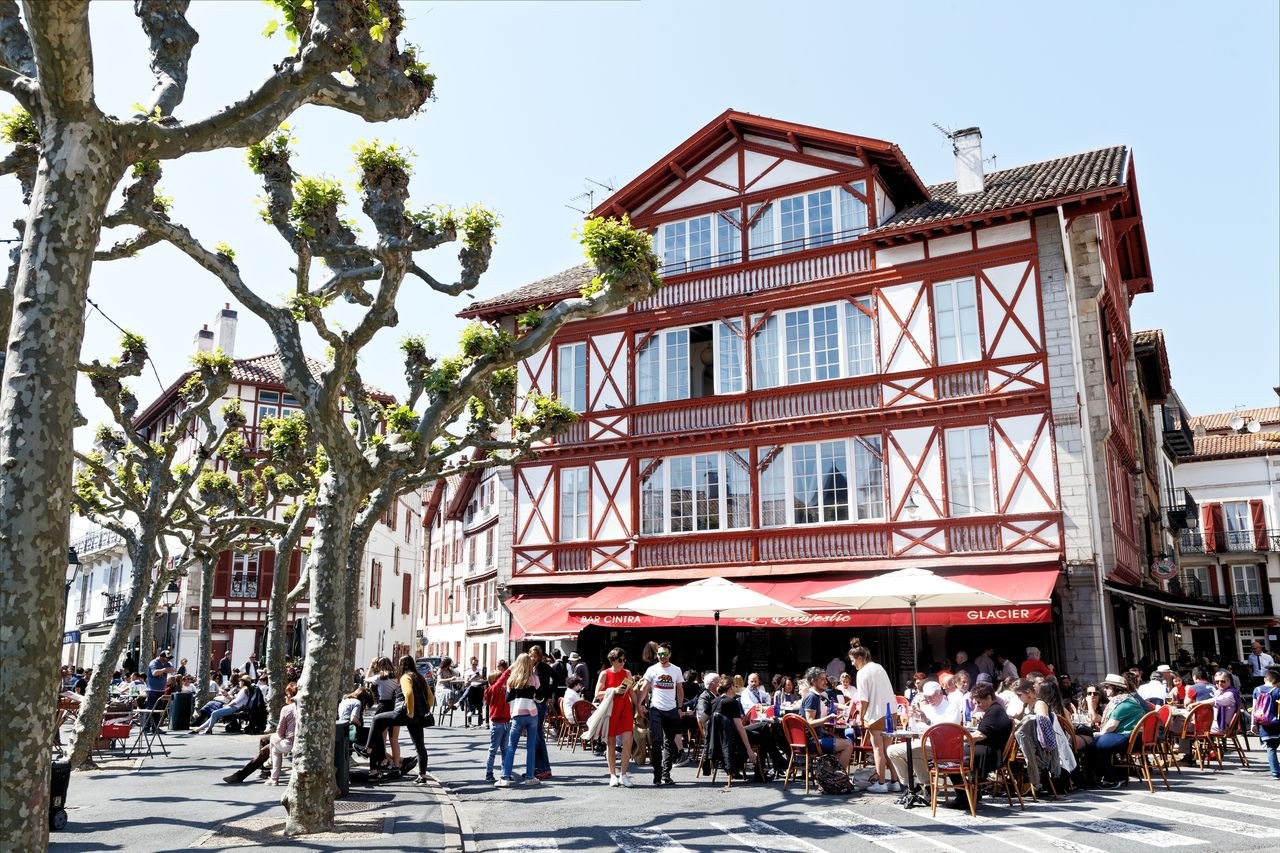
SAINT-JEAN-DE-LUZ
Only 30 minutes from Biarritz, the relaxed town of Saint-Jean-de-Luz attracts local tourists looking for less crowded beaches and much more affordable prices. The town which was once the main hub of the French corsairs has evolved to an important fishing port before becoming a famous seaside resort in the 17th-century after Louis XIV married Maria Theresa of Spain, also known as “l’Infante” at the local Cathedral – Saint-Jean-Baptiste.
Saint-Jean-de-Luz sits on a shell-shaped bay with fine sand, an elevated promenade – used as protection from the ocean – and majestic buildings such as the Casino La Pergola. On the backside, you’ll find vibrant pedestrian streets and squares lined with shops, restaurants and colourful half-timbered houses. Head to rue Gambetta to taste local food specialities such as the Macarons but also buy traditional house clothing known as “Linge basque”.
Towards the south, the town gives the way to the fishing harbour and the little village of Cibourne. From here, you can start a lovely 12-km hike to Hendaye via the gorgeous Fortress of Socoa (that might remind you of Essaouira port) and along impressive cliffs called the “corniche”.


Useful information about Saint-Jean-de-Luz
Don’t miss: Macaron at Maison Adam – the local Anchovy
Visit: La pointe Sainte Barbe for a panoramic view and the Socoa fort in Cibourne
Eat: Le Petit Louis – Akeita Coffee – Le Bistrot Luzien
Drink: Bar Cintra – Le Suisse – Le Middle
Sleep: Hotel Colbert – Villa Yoda – Grand Hôtel de la Poste
| How to get to Saint-Jean-de-Luz: Car via road D810 or motorway A63- Bus 816 from Biarritz, Bayonne and Henday – Plane via Biarritz (15km) or San Sebastian (20km) airports.
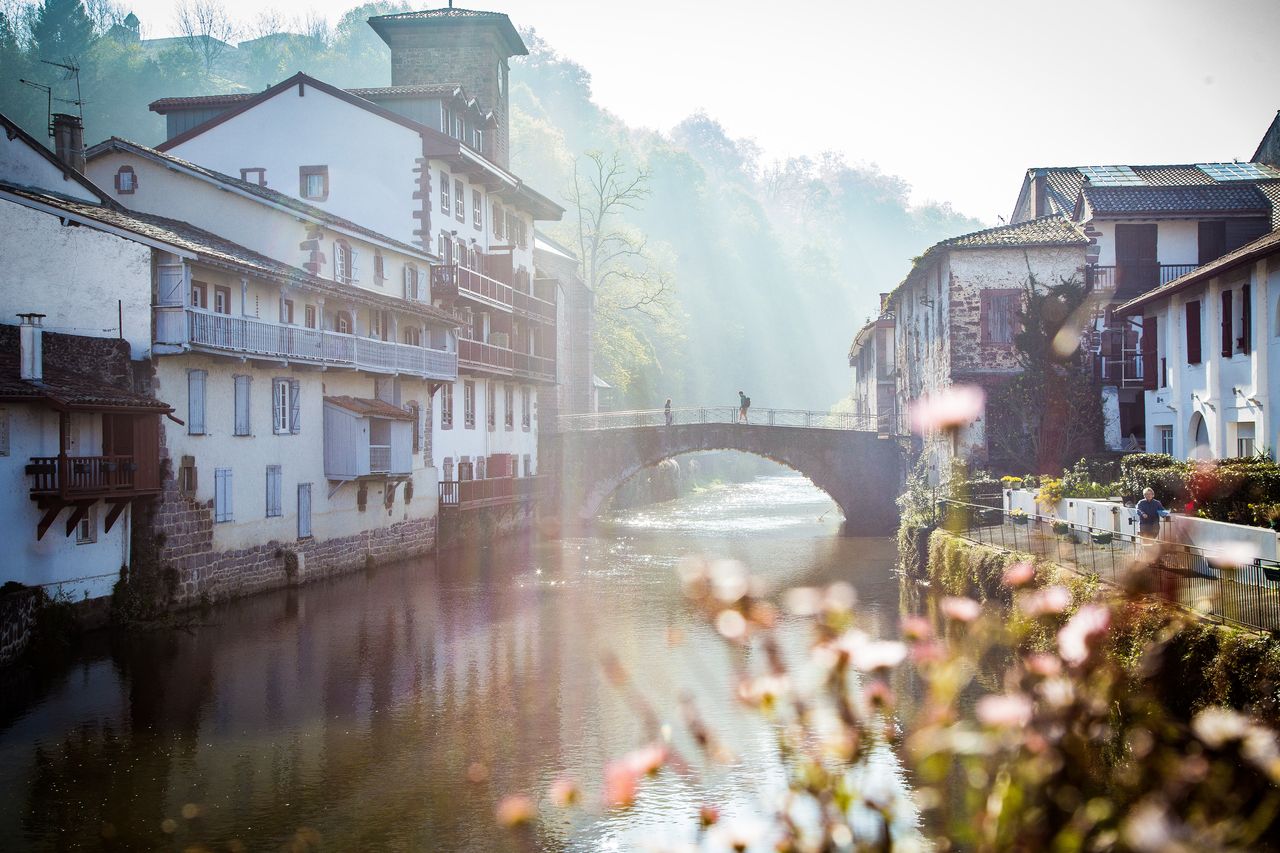
SAINT-JEAN-PIED-DE-PORT
Nestled at the feet of the Pyrenees, Saint-Jean-Pied-de-Port is located a few kilometres away from the Spanish border and only one hour drive from the towns of Biarritz in France or Pamplona in Spain.
Its unique architecture inherited from a medieval past stands out from the rest of the region’s villages. While the typical Basque houses painted in white with red or green shutters are mostly found on the outskirts of the town, the historical centre is organised around a couple of cobblestone streets bordered by old sandstone buildings turned into restaurants, artisanal boutiques, outdoor shops and hostels.
Above, the Middle-Age Citadel dominates the panorama and the large bulwarks surrounding the village complete Saint-Jean-Pied-de-Port’s distinct atmosphere and scenery.
Read More: What to do in Saint-Jean-Pied-de-Port – a complete guide
Although, Saint-Jean-Pied-de-Port essentially owes its popularity to being the starting point of the “French Way”, one of the Pilgrimage routes toward Santiago de Compostela in Spain. Visit the town anytime from April to October and you will be crossing paths with many pilgrims who can easily be identified by the Scallop shell attached to their backpacks and the baffled look on their faces mixed with excitement!


Useful information about Saint-Jean-Pied-de-Port
Don’t miss: The view of La Nive from the road bridge.
Visit: Church Assomption de la Vierge – Porte Saint Jacques – Citadel walkway
Eat: Café Ttipia – Chez Edouard – Restaurant Oillarburu
Drink: Café Le Navarre – Café de la Paix
Sleep: Hôtel Ramuntcho – Hôtel des Pyrénées – Gite de la Porte Saint Jacques
| How to get to Saint-Jean-Pied-de-Port: Car via roads D918 and D933- Bus from Pamplona (1h30 – €22) and direct train from Bayonne (3 per day) – Plane via Biarritz (55km) or San Sebastian (77km) airports.
road-trip itinerary
One of the best ways to visit the French Basque Country is to rent a car and go on a road trip. To help you prepare, I have created a flexible 10-day itinerary that will take you from the Atlantic coast, the Pyrenées, the Nivé valley and the most beautiful towns of the Basque country. Discover the incredible landscape of this region as well as the food speciality and local tradition.
To read more follow the below link!
More Article about the Basque Country
[wcp-carousel id=”15208″]

ARE YOU ON PINTEREST?
What about saving this post to your Pinterest board? Click on the photo to save this blog post for later.
We are also on the platform and we love pinning great travel tips. Follow Tales From The Lens’ boards to see our latest pins.
Don’t be shy, come say hi!
Please note │ This blog post may also include affiliate links to hostels or products we recommend, which means if you buy something following a link on this page, we’ll get a small commission. This will be of no extra cost to you but will help us continue running this blog. Thank you for your support.
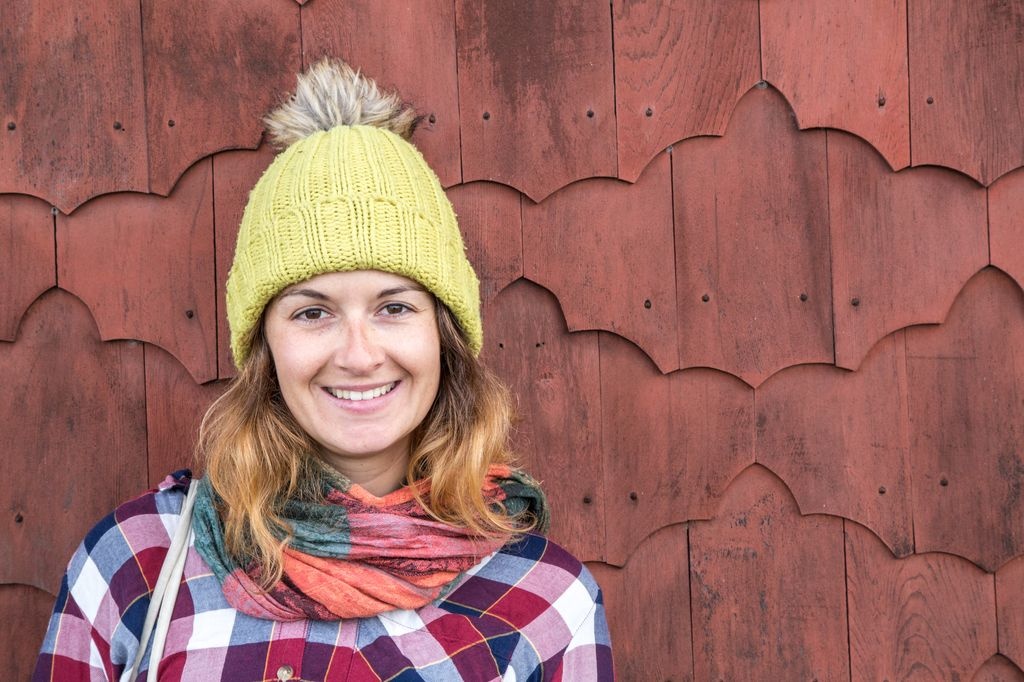
ABOUT THE AUTHOR
Jen – Owner, writer & photographer – has lived for the past 10 years across Oceania and Ireland while also travelling long-term in Latin America, North America and Europe. She has visited more than 60 countries and set foot on every continent in the world!
>> Favourite countries: New Zealand, Bolivia, Iceland.
>> Wishlist: Svalbard, Japan, Botswana, Alaska.
>> Philosophy: “We travel not to escape life, but for life not to escape us.
Jen is a coffee nerd, passionate about photography, wildlife and outdoor activities. Her organisation and curiosity make her a great travel companion always looking for DIY and off-the-grid adventures. For more info, check out the About page.
If you’ve found this travel guide useful and want to say Thank You, you can now buy me a virtual coffee!
